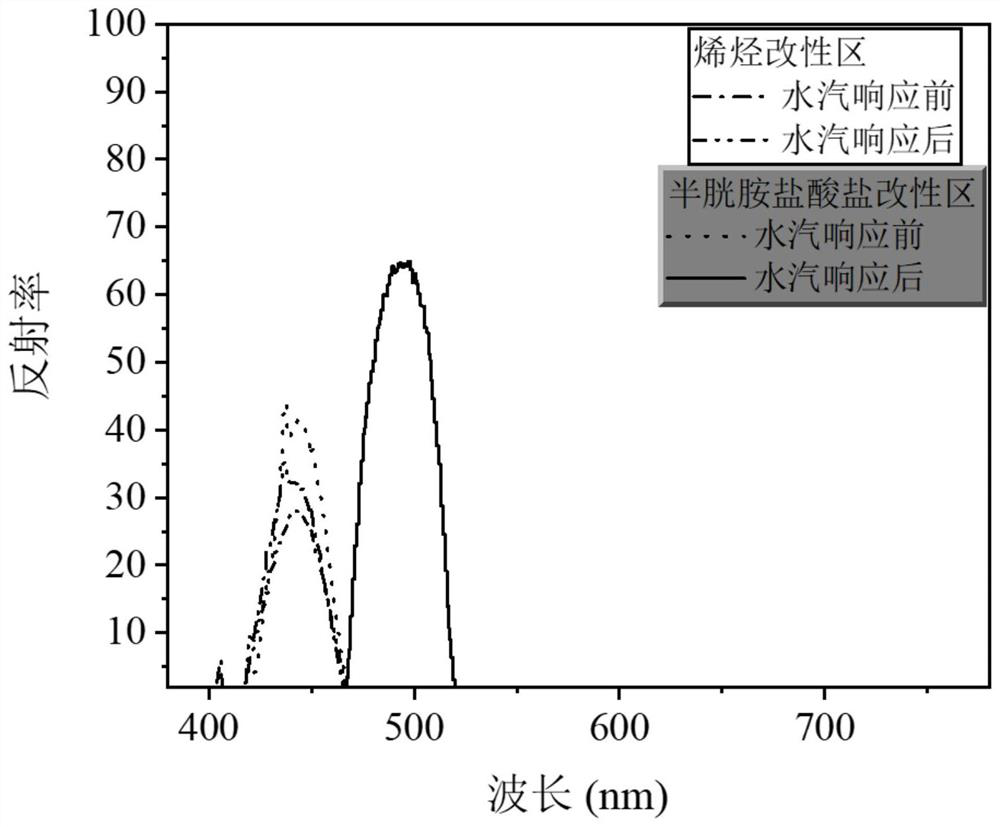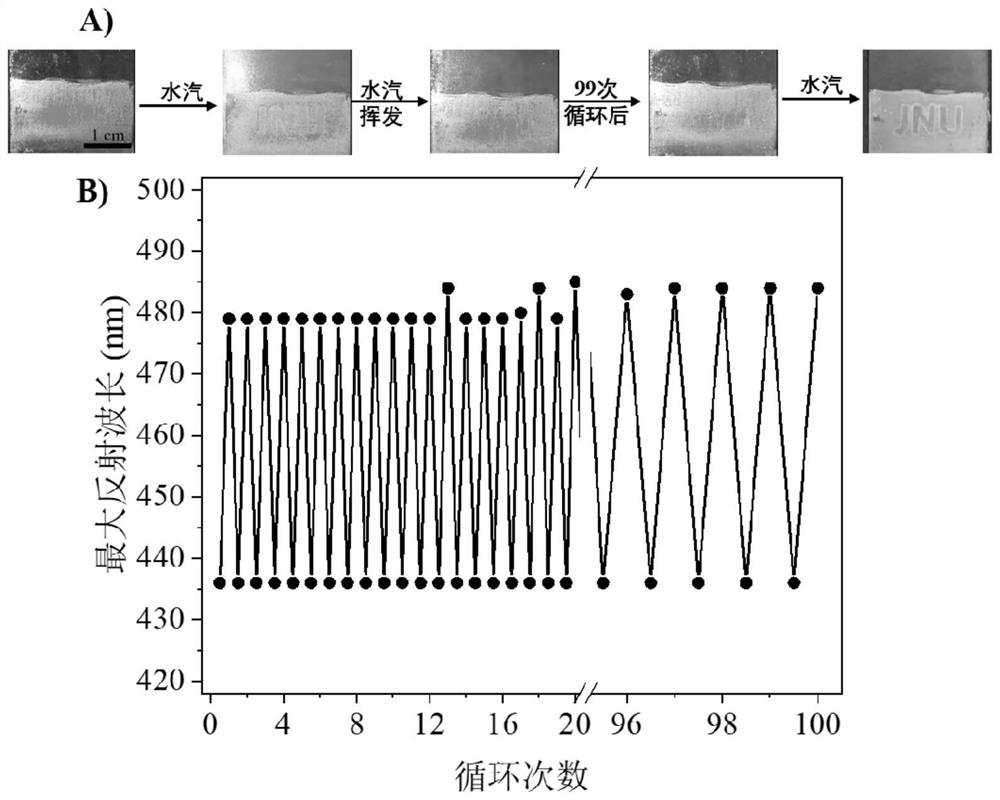Preparation and Application of Photonic Crystal Materials with Responsive Stealth Patterns
A photonic crystal and responsive technology, which is applied in the field of nanomaterials and functional polymer materials, can solve the problems of swelling of the responsiveness of the pattern area or poor tensile performance, inability to develop color, and poor mechanical properties of the pattern, etc., to achieve excellent stability Sexual, quick response effect
- Summary
- Abstract
- Description
- Claims
- Application Information
AI Technical Summary
Problems solved by technology
Method used
Image
Examples
Embodiment 1
[0052] Example 1 Preparation of hollow silica photonic crystals
[0053] (1) Preparation of polystyrene@silica colloid:
[0054] 0.6g of styrene, 0.9g of polyvinylpyrrolidone, 0.13g of 2,2'-azobisisobutylamidine dihydrochloride and 300g of water were added to a 500mL three-necked flask, and the reaction was carried out at 70°C for 24h. Purified by centrifugal washing, and finally obtained polystyrene microspheres with a diameter of 205nm;
[0055] Next, prepare polystyrene@silica microspheres: Disperse 0.6 g of polystyrene microspheres in 120 mL of ethanol. Then 3.1 mL of tetraethyl orthosilicate and 8 mL of aqueous ammonia were added to the diluted dispersion under magnetic stirring. The reaction was carried out at 50°C for 3h. Purification by centrifugation washing finally yielded polystyrene@silica colloids with a diameter of 245 nm.
[0056] Finally, by vertically depositing polystyrene@silica colloidal photonic crystals on the substrate: place the clean substrate vert...
Embodiment 2
[0062] Example 2 Hollow silica photonic crystal material with responsive stealth pattern
[0063] (1) Preparation of olefin-modified hollow silica photonic crystals:
[0064] Immerse the hollow silica photonic crystal in 30 mL of absolute ethanol. Subsequently, 1.5 mL of γ-methacryloyloxypropyltrimethoxysilane and 3.0 mL of ammonia water were added to the above solution at a stirring speed of 1100 rpm. The reaction was carried out for 6 h with continuous stirring at room temperature. Then, the obtained membrane was completely washed with ethanol to obtain the olefin-modified hollow silica photonic crystal.
[0065] It should be noted that, under the same conditions, when the addition amount of γ-methacryloyloxypropyltrimethoxysilane was replaced by 3.0 mL, 4.5 mL and 6.0 mL, respectively, the olefin-modified hollow dimethoxysilane could be successfully prepared. Silica photonic crystal; under the same conditions, when the addition amount of ammonia water was replaced by 1.5...
Embodiment 3
[0069] Example 3 Water vapor visible detection of responsive invisible patterns
[0070] In the obtained thiol-modified hollow silica photonic crystal, the olefin-modified region (background region) and the cysteamine hydrochloride-modified region (pattern region) without thiol group were placed in a dynamic environment with a relative humidity of 80% RH The reflection spectrum was measured under moisture, and after 1 second, the background area had no significant change in the reflection spectrum, while the maximum reflection wavelength of the pattern area had a significant red shift (51nm), such as figure 2 . It can be seen that the invisible pattern of the modified hollow silica photonic crystal has water vapor responsiveness.
PUM
| Property | Measurement | Unit |
|---|---|---|
| diameter | aaaaa | aaaaa |
| diameter | aaaaa | aaaaa |
| diameter | aaaaa | aaaaa |
Abstract
Description
Claims
Application Information
 Login to View More
Login to View More - R&D
- Intellectual Property
- Life Sciences
- Materials
- Tech Scout
- Unparalleled Data Quality
- Higher Quality Content
- 60% Fewer Hallucinations
Browse by: Latest US Patents, China's latest patents, Technical Efficacy Thesaurus, Application Domain, Technology Topic, Popular Technical Reports.
© 2025 PatSnap. All rights reserved.Legal|Privacy policy|Modern Slavery Act Transparency Statement|Sitemap|About US| Contact US: help@patsnap.com



